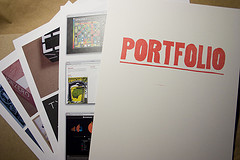Getting Your Work Online With a Photography Portfolio
This guest post was written by fotograf Rune Johansen
One of the many challenges of working for yourself is finding work. As a professional freelance photographer, the more avenues through which you can obtain work the better. One great way to gain exposure and get potential clients to view your work is to set up an online portfolio. An internet-based photography portfolio if designed well can really bring a touch of class to your work and allow people to view it at their leisure. It also gives you the opportunity to control exactly what your potential clients see, highlighting your best work and leading them through the information you want them to have.
HOW DO I BUILD AN ONLINE PORTFOLIO?
There are many ways to get your work online as a photographer. There are websites set up that allow you to sell prints of your work just by uploading high-res images to your account and letting the website do all the sales work. Of course they take a commission but for a lot of photographers this has become a steady stream of income. There are also websites like iStockPhoto that allow you to sell generic images for designers to use in their work such as on websites and in magazines. This can also pay well.
If you want a personal online portfolio, however, you will usually have to build it yourself. Don't worry though if you don't have any web design skills to speak of and the thought of building websites intimidates you. Adobe and many other graphics application developers have added the capability to build basic portfolios directly from inside their programs. Photoshop has a built in gallery feature that will automatically size your images, create thumbnails of them, and create an XHTML/CSS or even a Flash-based webpage containing all your images. Play around with the software and see what you can come up with.
Other options for a portfolio include using an open source solution such as Joomla! or WordPress to create a framework for your site, then using the many plugins and extensions available for these platforms to customise the site and turn it into a gallery based website. If this is too much of a challenge or you simply don't have the time, hiring a designer to do this for you will usually prove to be much cheaper than having one develop a website from scratch. Have a look around freelancing websites and call some local design agencies to see what the prices are like, you may be pleasantly surprised.
WHAT SHOULD I HAVE ON MY PORTFOLIO?
It is important to make sure you have the right information on your website, but it is equally important not to overdo it. Many people make the mistake of writing their entire life story on their portfolio and crowding the images with lots of text. As a photographer it is important that your work speak for itself, so a minimal description – usually just a sentence – will normally suffice. An “About” page should be included, but should only have the minimum of information needed for your clients, such as relevant qualifications and experience you have as a photographer. Possibly include some hobbies and interests as this helps people get a better idea of who you are, but a photograph of yourself will go a lot further to winning you clients (if it's a good picture!).
In summary, there are lots of ways to get your work online and no professional should really be without an online portfolio in this technological age. You don't have to spend a fortune to get a professional portfolio and it will serve you well for years to come.
Written by fotograf Rune Johansen
